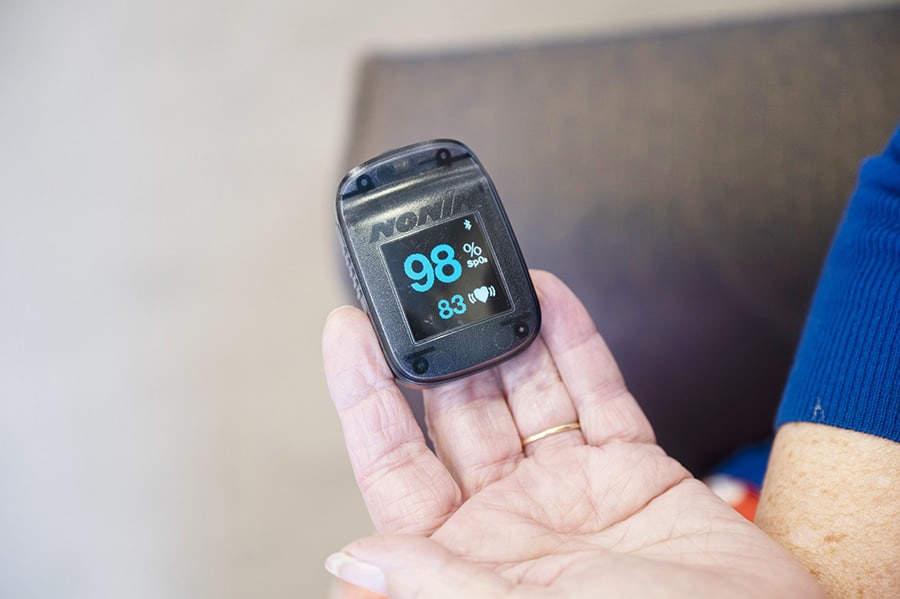EXCLUSIVE: How innovation and new tech can alleviate pressure on the NHS and reduce hospital waiting lists

Gary Steen, Chief Technology Officer at Tunstall Healthcare, discusses how innovating health and social care services is crucial for saving lives, reducing costs, and alleviating pressure on the NHS.
Over the last two years, we’ve seen accelerated change in terms of ways of working and a more integrated and collaborative approach to providing health and social care services. The adoption of new assistive technologies has facilitated this, with the pandemic highlighting just how possible it is to implement change and improve care in shorter timescales than we would previously have thought possible.
Integrating assistive technology
The integration of assistive technology has the ability to improve clinical practice, giving time back to care, supporting staff members in their roles and helping to ease backlog pressures. Data and analytics, AI, IoT and the cloud can improve patient outcomes and support the reduction of waiting lists by delivering more personalised treatments, enabling connected care from anywhere and providing clinicians with the data to facilitate preventative care.
Even without accounting for the impact of the pandemic, our ageing population means that we must look at alternative ways to deliver care services, in order to cope with increasing demand. Existing solutions such as telecare, in combination with smart tech such as tablets and speakers, have seen unprecedented adoption during the pandemic and proven the benefits of remote care, as well as the willingness of older and vulnerable people to embrace them.
When we achieve successful and integrated services for citizens, the benefits flow through the system to primary, secondary, community, social and health care services. If we get our approach right, citizens stay in the setting of their choice for longer, delaying entry into residential care and reducing costs and the need for more complex interventions.
The benefits of assistive technology
New innovations allow us to drive collaboration between multiple stakeholders, such as patients, families, clinicians, social care, care home operators, and local councils by streamlining administration, simplifying data-entry demands and automating certain tasks, whilst retaining control.
More intelligent and predictive solutions can support care providers in informing care planning, and empower service users to be more involved with their own health and care from the start. This in turn engages them further with their own care and delivers a greater understanding about the key role they play in supporting their own health and wellbeing.
Remote patient monitoring (RPM) enables services to be shaped around the user, rather than being place-based. During the pandemic, we’ve witnessed RPM support, a reduction in the need to travel to appointments with clinicians or carers, real time data provision, and a reduction in hospitalisation, which have improved outcomes for users, reduced costs, and enabled more effective care provision through greater engagement with service users.
Investment in assistive technology is key to reconfiguring and integrating our services. It’s essential that service providers and users are involved in the digital transformation if we’re to innovate, embrace technology successfully, and deliver new approaches which create tangible benefits for citizens.

Looking ahead
A health and care system fit for the 21st century must have digital innovation at its core. The digitisation of care delivered by social care organisations and professionals offers incredible opportunities for the health and wellbeing of our population, and patient outcomes to be dramatically improved.
As the NHS faces a challenging future, it should embrace the role that technology can play in supporting patients, caregivers, and systems. The goal should be to keep as many people as possible out of hospital, so that those in need can access treatment, while also continuing care remotely to keep vulnerable people in a place of their choosing.
We’re beginning to see the next generation of predictive care technology, and, over the next few years, it’ll encompass integration that enables diverse and scalable models of health and social care. Using AI and taking data-driven insight from multiple sources, providers will use this next generation of solutions to optimise Population Health Management programmes by providing personalised and anticipatory care.
By working collaboratively with the technology industry, the NHS can be in control of its own future, shape its services and empower its staff to provide more personalised care and a better experience for patients, whilst also reducing waiting times. The NHS has an opportunity to build on the digital foundations accelerated by the pandemic, to create a truly integrated healthcare system, fit for the future and those who serve it.
As we build back better after COVID-19, the integration of new technology can help us look to the decades ahead with confidence. This is a unique moment when we must continue to build on the legacy that makes the NHS and social care provision the very best of Britain. We must seize it.
For more information, please visit www.tunstall.co.uk

